Shopping with Arthritis: My favorite pain-reducing shoes
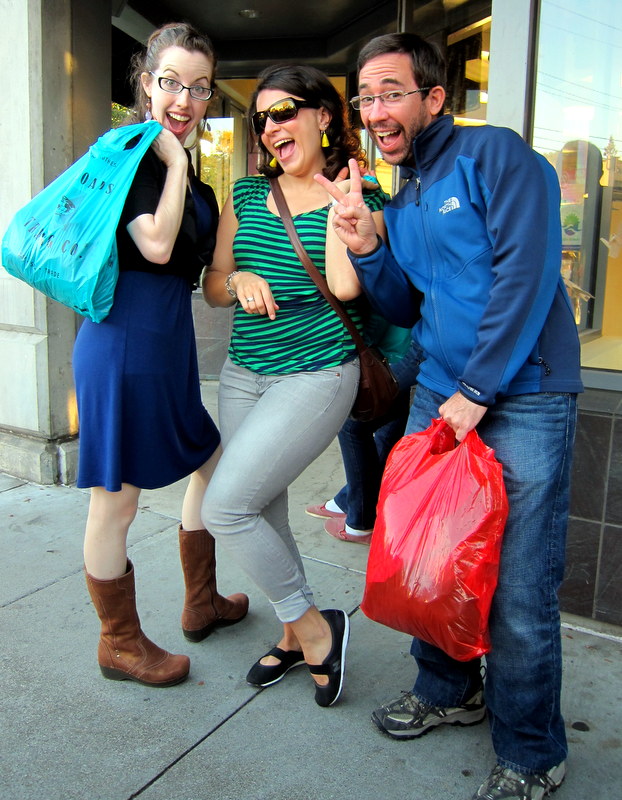
When people find out that I have rheumatoid arthritis (also known as autoimmune arthritis),I’m often asked how I’m able to swing dance and what shoes I find are most comfortable. As part of the blog carnival “Non-medical ways to ease rheumatoid arthritis pain,” I’d like to share some of my favorite shoes that reduce or prevent foot pain.
While I’m at it, I’ll also share my favorite professional and casual shoes and some simple gadgets that help those with arthritis put on and take off shoes easier. I hope you find it useful, and hey, now that the holidays are here, you just might find a gift idea for a loved one with arthritis!
Shopping for Arthritis-friendly dance shoes
Recommendation #1: Flats are where it’s at.
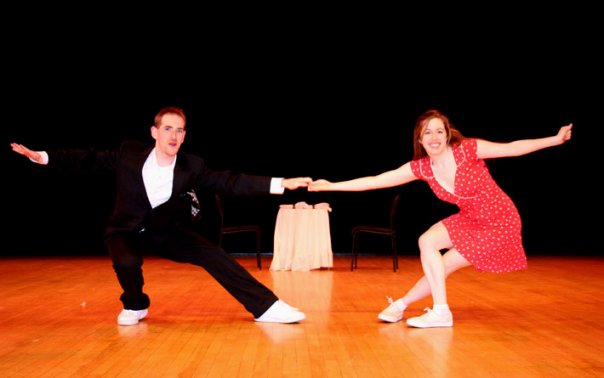
While many popular social dances such as salsa and tango favor high heels for the ladies, mercifully swing dancers (specifically lindy hoppers) favor flat, athletic, Keds-like shoes. I only wear heels for special performances or occasions when I can easily change out the heels for something different (such as my wedding, at which I had 4 pairs of shoes…but that’s a story for another day!).
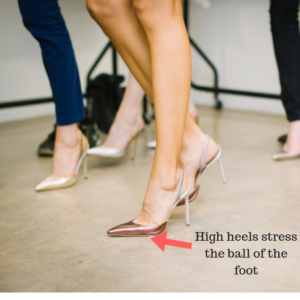 Heels are difficult to tolerate for many people with arthritis because their design results in excess force on the metatarsal joints, which tend to be inflamed with rheumatoid arthritis. These joints are on what we colloquially call the “ball” of the foot. This article from the American Academy of Orthopaedic Surgeons has a great overview of the foot issues prevalent for those with rheumatoid arthritis, for those interested in learning more.
Heels are difficult to tolerate for many people with arthritis because their design results in excess force on the metatarsal joints, which tend to be inflamed with rheumatoid arthritis. These joints are on what we colloquially call the “ball” of the foot. This article from the American Academy of Orthopaedic Surgeons has a great overview of the foot issues prevalent for those with rheumatoid arthritis, for those interested in learning more.
This article actually measures the force changes when people wear high versus lower heels (and the positive effects of orthotics). If you’d like to take a geeky walk down memory lane, check out this article from 1884 that addresses the negative effects of various styles of shoes including heels!
Recommendation #2: Find your “sole-mate,” a sole that finds the sweet spot between sticky and slippery.
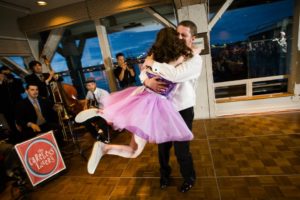
Dancing will involve a lot of pivoting and turning,. Thus, you need a shoe that will allow you to pivot and turn without getting “stuck” (which causes excess strain on your joints and ligaments, particularly your knees and ankles). However, you don’t want a shoe that is so slippery that you will risk losing your balance or slipping and falling. Many swing dancers prefer leather or suede-bottomed shoes, or rubber that is relatively flat and smooth rather than sticky.
Also, consider that every dance floor will have a certain amount of inherent “stickiness” or slipperyness, so most dancers end up having a variety of shoes they bring with them so they can adapt to the floor and dance most comfortably.
Recommendation #3: Whatever shoe you choose, make sure to have adequate cushioning.
To me, this usually means having an orthotic insole such as the Walking Company’s Casual Metatarsal Orthotic, Superfeet, or simply an extra cushion on the ball of my foot. Put simply, the thinner your shoe, the more force the tender bones and joints of your foot will have to absorb. When you add padding to the shoe (either in the construction of the shoe or in additional inserts), you are requiring that the shoe absorb that force rather than your foot (citation).
So, after all that, here are my favorite specific brands of dance shoes!
1. Aris Allen Classic Canvas Dance Sneaker (see photo at right).
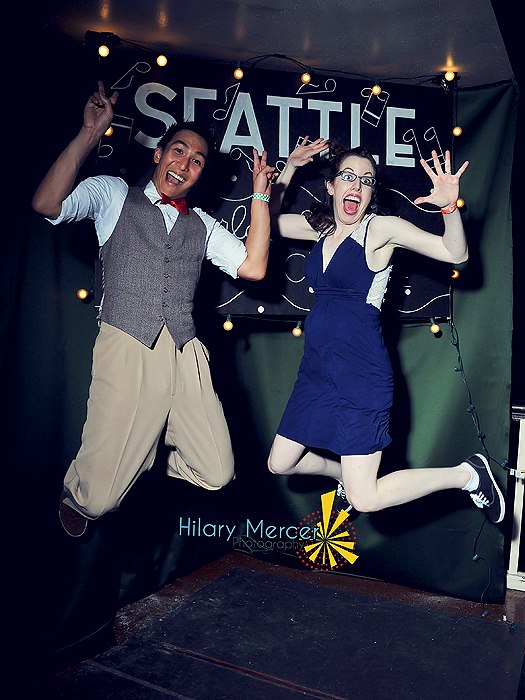
These are the shoes I end up wearing 80% of the time; I have multiple pairs in white and black. They have suede leather soles, can be dressed up or down, and provide just enough support to prevent pain but not so much support that they limit my flexibility.
2. Toms Silver Glitters (see photo above)
These tend to be on the slippery side, but I like that they don’t require laces and are thus easy to put on and take off. They also have some arch support, and come in lots of great colors and styles, including glitter!
3. Aris Allen 1940s Peep Toe Mesh Oxford
These are my exception to the “flats only” rule. The thick, angled heel, the insole and the sueded bottoms make these the easiest heels to dance in. Bonus: they definitely are worthy of a dress and capture the authentic 1940s vibe!
One last note on dance footwear
The majority of swing dancers I know swear by Keds, however Keds simply don’t fit my feet comfortably. I would recommend checking Keds out since they are very popular across a wide variety of dancers. Also, check out this interesting discussion thread where various swing dancers weigh in on their favorite shoes and provide tips for purchasing shoes with just the right fit to make dancing pain-free.
Arthritis friendly non-dance shoes for all occasions

The main difference between shopping for dance shoes versus non-dance shoes is that the slipperiness of the sole is not as important. This is because I won’t be pivoting or turning as frequently.
Having said that, I maintain recommendations 1 and 3 from above (stick with flats, and ensure you have adequate cushioning).
Arthritis Friendly Professional Shoes
1. Ziera (formerly known as Kumfs)
I have a super cute pair of black leather Kumfs flats with bows, which are not currently on their website but are very similar to the ones pictured at right. You can see their great arch support on the inside of the foot, and their leather construction means no painful rubbing (which can cause bunions).
The Dansko heels are the only ones in the world that I can wear for more than a couple hours without feeling pain! They can be dressed up or down super easily, and are unbelievably comfortable (unbelievable in that, “I’m wearing heels and I’m actually comfortable!”). The Dansko designers are geniuses.
3. Gentle Souls by Kenneth Cole Iso Bop
I bought a used pair of the Iso Bop from Crossroads Trading Company, my favorite place to buy “gently used” clothes and shoes. They tend to have great brands for great prices since everything is secondhand. Like many of my recommendations, these are a bit pricey, but if you can find them at Crossroads or Ebay, you probably won’t regret it! They offer great arch support, are easy to put on and take off, and are very lightweight.
Other brands I would suggest include Born , Clarks, Munro, and Mephisto.
Arthritis-friendly shoes for casual occasions
1) Dansko canvas: Veda (with laces) and Volley (no laces).
Dansko recently came out with a cheaper, more casual line of shoes with the same awesome support on the sole but with more “give” in the material because they are constructed with canvas. These are my go-to shoes to wear on casual occasions.
2. Dansko Crepe boots

You can see me wearing these on the first picture of this post. Again, they have the super supportive base of all other Danskos, yet these are made from a different material that actually does feel lighter. They have a zipper on the side that’s easy to zip up or down, and are aesthetically pleasing enough to wear with a dress or jeans. Love these!
3. Miz Mooz Bloom boots.
These are a splurge but I get tons of compliments on them and adore them. They are great for people with wider feet or a bunion (I have a bunion on my right foot only). They don’t offer a ton of of arch support, but the toebox is big enough to easily fit an orthotic or insert.
4. Dansko Sandi sandals
I have ones similar to the Sandi and wear them almost every day in the summer. They are super comfortable and are easier to purchase online than other Danskos because you don’t have as much material to potentially rub on the sides if you have wide feet. I even officiated a wedding in the patent leather version of them!
Bonus tips regarding Danskos:
As you can see above, I am a huge fan of the Dansko brand because I feel that their rigid, thick soles really absorb the force of my foot hitting the ground in a way that decreases inflammation in my metatarsal joints.
However, some people find that due to the rigidity of the soles, they feel more prone to tripping or rolling their ankles when wearing Danskos (particularly their classic clogs). I would recommend trying them on at the store and walking around a bit to see if they suit you. You will generally want to try on Danskos before purchasing them anyway, because they are all handmade and thus each shoe fits slightly differently.
Bonus recommendation: Simple “dressing aides” can help
As an occupational therapist, I’m prone to getting geekily excited about the plethora of dressing gadgets (or “adaptive equipment”) on the market. During my schooling and clinical internships I’ve come across some very simple and commonly used dressing aides that can help people who experience difficulty while putting on shoes or socks.
- Sock Aid: I recommend the flexible style of sock aid. They don’t look like much, but in my internships I’ve seen then be extremely useful to those who have decreased strength or range of motion.
- Shoe horn: One of my favorites, this allows you to push your heel into your shoe using the force of your foot rather than the small joints of your hands.
Concluding thoughts
Given the length of the above post, you might think that I am intrinsically a “shoe person.” However, up until my diagnosis, I was never “into” shoes. I became more interested in clothes and shoes after starting swing dancing in the mid-2000s, and then truly became a “shoe person” in the late 2000s when I started having increasing foot pain.
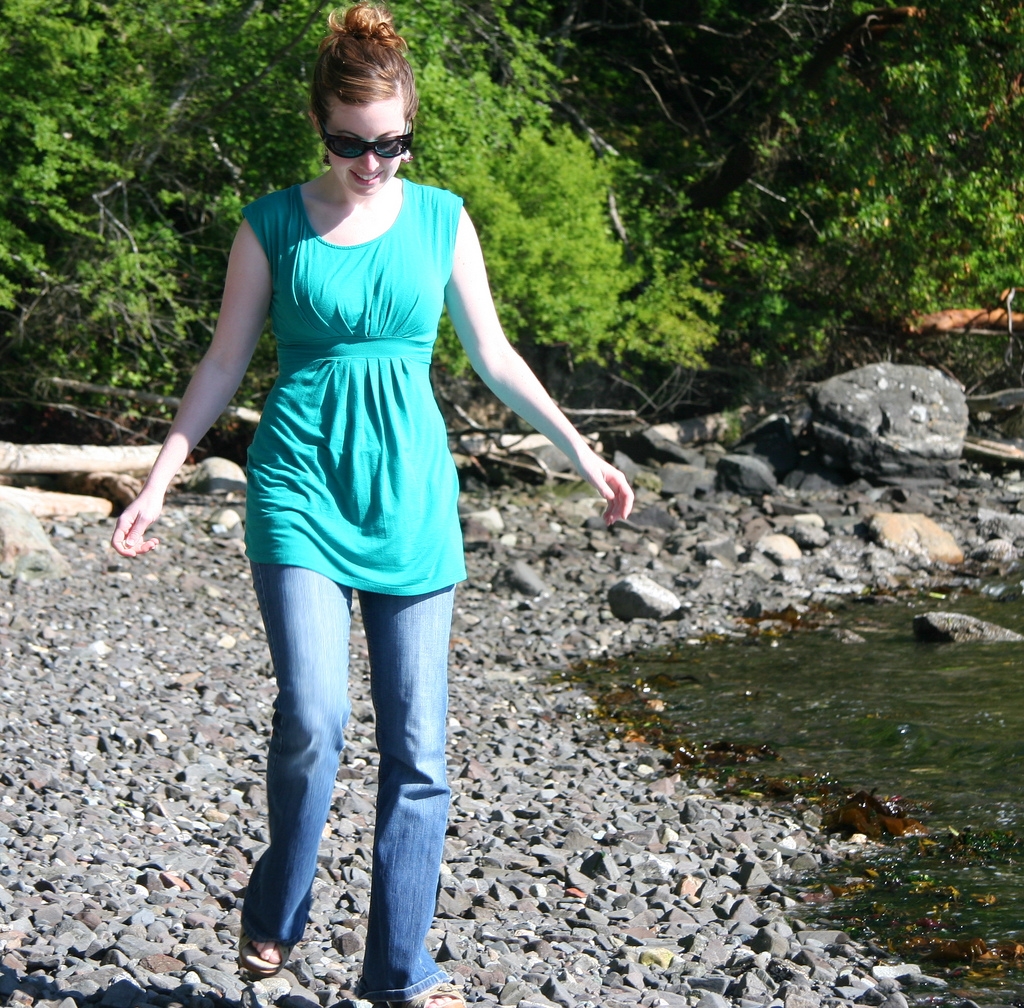
When I was first diagnosed with RA, I never expected it might lead me to become a shoe person, but I can honestly say that I actually do enjoy shoe shopping in that it’s an exercise in having my cake and eating it too. I’d like to wear something that’s aesthetically pleasing as well as pain reducing.
The main downside is the price, because I’ve found you simply can’t compromise price for comfort. As warped as this may sound, I actually do consider shoes part of my medical expenses, because I feel they prevent additional pain and inflammation.
I hope that these suggestions are useful. I’d love to hear any additional feedback you have and look forward to reading the RA Warrior’s post after the blog carnival is over! Also, I’m time travelling back from 2019 to say if you’d like to see my latest up to date recommendations, check out my Arthritis Life video project!
26 Comments
Chris
I am trying to find Extremely Soft Outer and Inner Sole Above the Ankle Shoes for Chronic Pain in the Bottoms of both of my Feet. I am 65 year old man who has worked in Concrete and other hard surfaces all of my life. For the past 20 years my Feet hurt so bad just to walk. Do you have any recommendations? Sincerely, Chris.
Mary Ann Adams
Thank you for this informative post!
Angelle
Hi! I found this when I was googling “comfortable shoes for rheumatoid arthritis” or something like that. I also swing dance (well, I did before injuring my knee and having surgery recently) and I also have RA (which I developed at age 18–I’m in my 30s now). I have to say that your writing about dance and arthritis is inspirational to me.
Cheryl Crow
Wow, thank you so much for taking the time to write! I’m sorry you haven’t been able to dance due to your knee surgery and I wish you a speedy recovery. I found that when I injured my knee, it took a little longer to heal than a typical person due to the RA, but it got there eventually 🙂 Let me know if you’re ever out in the Seattle area!
Vivian
Hi Cheryl,
Your post is amazing. My name is Vivian Tsai and I am a graduate student in Industrial Design at Academy of Art University. I am working on a thesis project titled “Improving the Dressing Experience.” As part of my thesis research, I would like to interview (45-60 minutes) people who have difficulty dressing themselves due to chronic pain, joint stiffness or other forms of movement impairment, such as injury, age or arthritis.
I’ve been looking for people who can share their experience with me. So if it’s possible, please talk to me and tell me more about it. Any experience are all value for me. I would like to learn more behavior of RA people. To achieve this goal, I need your advice.
Cheryl Crow
Hi Vivian, It’s wonderful to hear about your project! I would be happy to share my experience; right now, dressing my big and wiggly 8 month old is proving more difficult than dressing myself, which would be another interesting topic to address 🙂 Have you reached out to any social media groups such as Creaky Joints, RA Chicks, RA Guy, or RA Warrior? The topic of how to perform daily tasks in a way that minimizes joint pain is often discussed on the facebook groups I follow from those pages, so you could get some interesting perspectives there as well (particularly if you are looking for people who are more severely impaired by their arthritis). Thanks again for reaching out and I’m happy to answer any questions you have, I will email you at the address you provided.
wale
My own adopted shoes are generally shoes with softer but higher soles that are capable of absorbing shocks during motion. The design is of minimal importance as far as rheumatism is concerned.
Nora Duran
Hi! My name is Nora, I live in Mexico and I also have AR! where can I find the shoes you recommend above? I am really struggling with my feet while chasing my two year old! I am going to Vegas this weekend and I want to buy them…. help! thanks
Pingback:
Rita
Hello Cheryl,
Thanks for your article and recommendations. I am very interested in the Aris Allen peep-toe mesh oxfords. I have seen them previously but compared to custom dance shoes, the price point so reasonable I thought there is no way they could be very comfortable. Is the leather very soft and does the leather and mesh give? Is there good cushioning and arch support? Room for orthotic if I gett one?
I had bunion surgery probably 30 years ago and now doctors are talking about taking wedges out of the big toe and forefoot to realign. (The first surgery– just shaving down each bunion — didn’t help at all but the pain left me terrified of doing it again.) I also have some arthritis in the big toe joint. I am trying to stave off surgery as long as possible because of fear of the pain, fear of the outcome and the need to be give up dancing for at least a good while.
Thanks for listening and I look forward to your response.
Cheryl Crow
Hello and thanks for getting in touch! I have to say that I do not wear the Aris Allen peep-toe mesh oxfords on a normal basis but do wear them on special occasions. For my foot, they are comfortable for dancing an hour to two hours with some breaks. The mesh definitely gives and I find the leather to be soft. There is a small amount of cushioning and arch support although if you need lots of arch support, you might want to get one of those small glue-on arch supports for added comfort.
I’m sorry to hear about the bunion surgery and big toe arthritis, I hope that you are able to dance for a long time both before and after the surgery! I would definitely try the Aris Allens out, you might find they are just great, and if not, you can always return them!
Pingback:
diet trends
Way cool! Some very valid points! I appreciate you penning this write-up and the rest of
the website is also very good.
Cheryl Crow
Thanks very much, I’m so glad to hear it was helpful and that you enjoyed the rest of the site as well 🙂
Elyse
Hi Cheryl,
I read your article in an arthritis magazine and just had to contact you because I was shocked and comforted by how much we have in common! I am also a dancer, was diagnosed with RA at age 20, and am about to become an Occupational Therapist! It is great to know that there are other people out there trying to stay very active with RA.
Thank you for this post, I will definitely be looking into buying some new shoes!
Thanks,
Elyse
Cheryl Crow
Hi Elyse! It’s so great to hear from someone who shares the same interests and unique RA experience! What kind of dance do you do? Where are you going to OT school? I’m currently studying for my board exam and am hoping to take it in April, before the national conference in San Diego. Let me know how the shoes work for you and I look forward to hearing from you! – Cheryl
Elyse
Hey Cheryl,
I currently teach Zumba, but I grew up doing ballet, jazz, tap, and did modern in college. Looking into doing ballroom with my boyfriend and swing is one of my favorites! I’m going to OT school at Springfield College in Massachusetts. Good luck on your boards!!! Are you going to the conference? because I will be there and would love to meet you! Feel free to email me at edolde165@gmail.com.
Thanks!!
-Elyse
Cheryl Crow
Hi Elyse! I hope you are loving OT school! I’m studying for my boards, which will be in 2 1/2 weeks. After the boards, I WILL be going to the AOTA conference! I will email you about finding a time to meet. Thanks for getting in touch!
LilSherry
Hi, I’d like to add for professional or casual shoes, birkenstock now makes a soft footbed! I bought a pair of their paris shoes in black with the soft footbed in june, and my knees have not hurt me since, neither have my feet. Except for the toe joint that sometimes hurts no matter what, but that’s not related to walking or not walking. (I hope that makes sense.) These are the shoes for me, I would like to encourage others to try them out. You have to try a lot of shoes before you find ones that help. Danskos are wonderful shoes as well, they just are not something I can handle for 12 hours on my feet, whereas I can work in birkenstocks and not give my feet a second thought.
Cheryl Crow
Hi there – thanks so much for the post, I didn’t know that Birkenstock had branched out and made a soft footbed. The Paris shoes look super comfortable, and it appears that the have a flexible material, which would be great for people with bunions as well as other foot issues! I totally understand what you mean about certain joints that hurt no matter what, and others that hurt as a specific result of walking or other activity 🙂 I also agree that you have to try tons of shoes before determining which ones ultimately work best for your body. Thanks for putting in your recommendation, I’ll try them out next time I’m shoe shopping!
kyle
As a OT is there any hand splints you can make to help us with RA?My RD sent me to one but I haven’t gone yet.Is there really anything they can help with?
Cheryl Crow
Hello, and I apologize for the delay in response! I’m happy to report that OTs can and do make many splints to help with RA. The type and nature of the splint will always depend on the type and nature of the problem you are experiencing; some splints are designed to take stress off of certain joints in order to prevent pain, while others are designed to elongate or shorten tissues to position the hand for better function. I’m guessing your doctor referred you to an OT with a specialization in hand therapy. Certified Hand Therapists can be either OTs or PTs who have spent a large amount of time studying and treating conditions affecting the hand, and have passed a rigorous test to become certified. However, even if you do not see a certified hand therapist, all OTs are educated in a variety of splints that can serve patients with RA. If your doctor has recommended it, I would urge you to see the OT, who can look at your specific hand issues and recommend something tailored to your needs. Good luck and let me know how it goes!
Pingback:
RhythmMad
Wow, Cheryl! I don’t have RA, but I certainly appreciate this post. As a dancer and someone with what seems to be an uncommon foot type (at least in the eyes of most shoe companies), I am constantly in seach for comfortable, athletic shoes that don’t look like I’m headed to the gym.
My feet require a “straight last,” a term that nobody seems to know besides my foot doctor. Most shoes are shaped to curve inward. My feet are straight and wide, which result in my baby toe trying to bust out of the shoe at the side.
My go-to dancing shoes are Keds. While they still have the curve, I find that if I rip out the insole and stuff my superfeet into the shoe, it works out okay (I use Orange E insoes – this color is marketed as a men’s insole, but the women’s don’t work for me).
I’m not entirely happy with the Keds option, but it’s the best I have found thus far. I would love to find a shoe similar to this that already has removable insoles. The Keds are too shallow for me not to remove the original insole (my heels would pop out if I didn’t). Going without insoles is not really an option, as the straight last is not the only issue.
Do any of the shoes you’ve posted come with removable insoles? I’m always looking for shoes of all styles, and some of these look like promising prospects!
Thanks for posting this! Really! I think this will be beneficial for a lot of people, both those with RA, and without.
Cheryl Crow
Hi Madeline! Your conundrum is interesting – I wonder if you have tried ordering wide or extra wide shoes? I know you can search for a variety of widths from websites such as Zappos.com. That might solve the problem, if the problem is that most shoes taper too greatly on the pinkie toe side. Interestingly, I found a website that details the different types of lasts from the New Balance brand – perhaps you could get a straight last shoe from them and suede it?
As far as removable insoles, unfortunately my go-to shoe brand (Dansko) does not have removable insoles. However, the Aris Allen ones I linked to DO have removable insoles, although you might have the “heel slipping out of the back” problem (as I have had that before with certain insoles). The Toms do not have removable insoles that I can tell, but they come up pretty far in the back and you might be able to put an insole in there. The Kumfs and Gentle Souls do not have removable insoles, which I’m guessing is because their insole is part of the main feature of the shoes.
I’m sure you’ve thought of this but you might want to go to Nordstrom, as their shoe salespeople tend to be super knowledgeable and could probably point you in a good direction as well…let me know how your search turns out!
Madeline
Thanks for the info, Cheryl! I’ve tried Nordstrom, but I didn’t get much help from them. However, I do recall having some success with wide shoes a while back, and perhaps I need to explore that option further. The chart you linked to is very interesting! I’m definitely going to look into that. Thanks for the follow up!